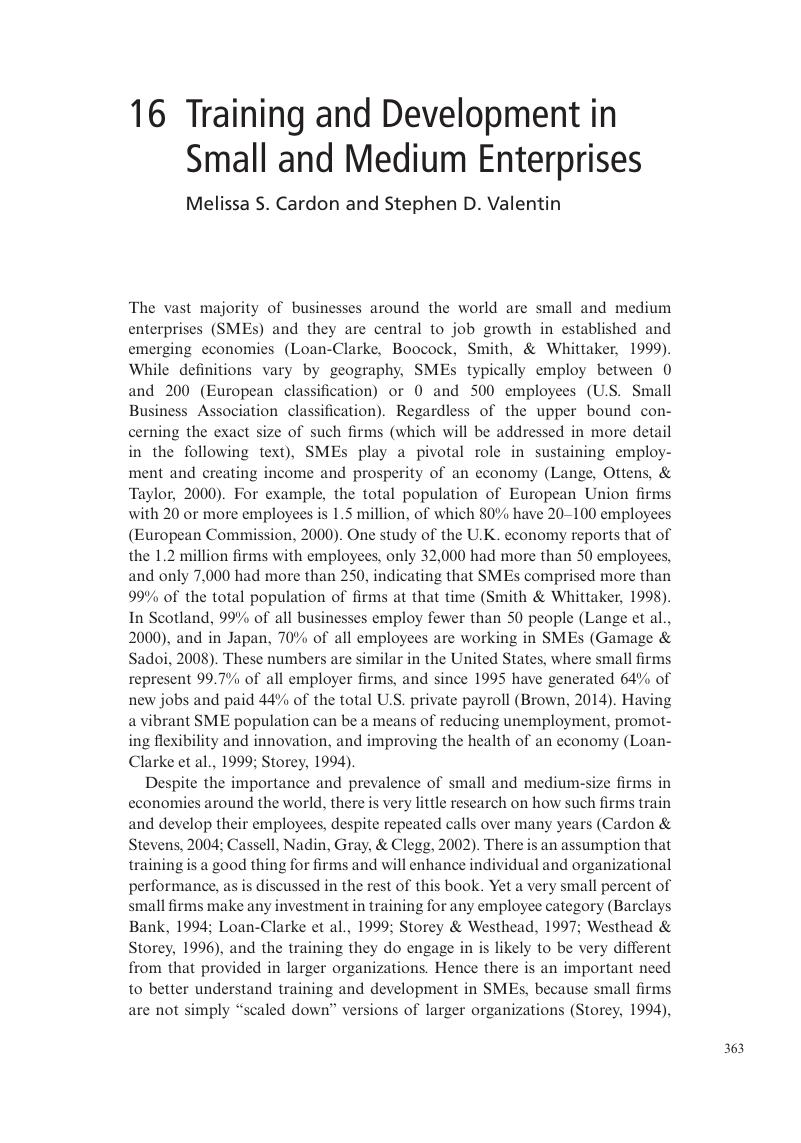Book contents
- The Cambridge Handbook of Workplace Training and Employee Development
- The Cambridge Handbook of Workplace Training and Employee Development
- Copyright page
- Dedication
- Contents
- Figures
- Tables
- Contributors
- Miscellaneous Frontmatter
- Preface
- 1 Introduction and Overview
- Part I Fundamental Issues in Learning and Transfer
- Part II Understanding the Learner
- Part III Designing the Intervention
- Part IV Special Topics
- 16 Training and Development in Small and Medium Enterprises
- 17 Team Training
- 18 Developing Cultural Intelligence
- 19 Implications of Positive Organizational Behavior and Psychological Capital for Learning and Training Effectiveness
- 20 Rings of Fire
- 21 Rockstar vs. Ringmaster
- Part V Workplace Learning from Other Lenses
- Index
- References
16 - Training and Development in Small and Medium Enterprises
from Part IV - Special Topics
Published online by Cambridge University Press: 30 October 2017
- The Cambridge Handbook of Workplace Training and Employee Development
- The Cambridge Handbook of Workplace Training and Employee Development
- Copyright page
- Dedication
- Contents
- Figures
- Tables
- Contributors
- Miscellaneous Frontmatter
- Preface
- 1 Introduction and Overview
- Part I Fundamental Issues in Learning and Transfer
- Part II Understanding the Learner
- Part III Designing the Intervention
- Part IV Special Topics
- 16 Training and Development in Small and Medium Enterprises
- 17 Team Training
- 18 Developing Cultural Intelligence
- 19 Implications of Positive Organizational Behavior and Psychological Capital for Learning and Training Effectiveness
- 20 Rings of Fire
- 21 Rockstar vs. Ringmaster
- Part V Workplace Learning from Other Lenses
- Index
- References
Summary

- Type
- Chapter
- Information
- Publisher: Cambridge University PressPrint publication year: 2017
References
- 6
- Cited by



